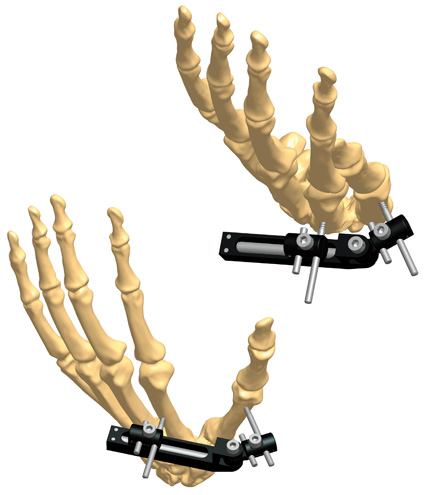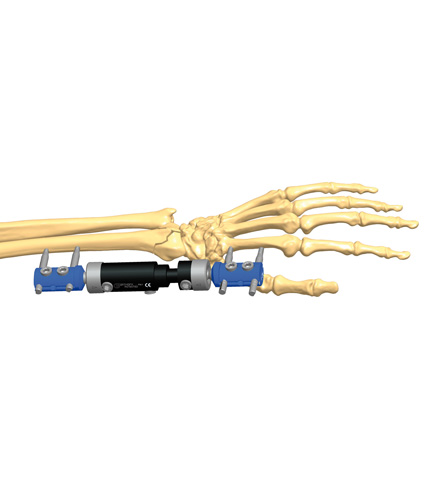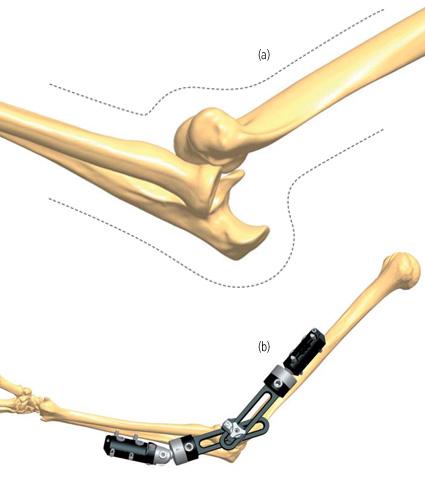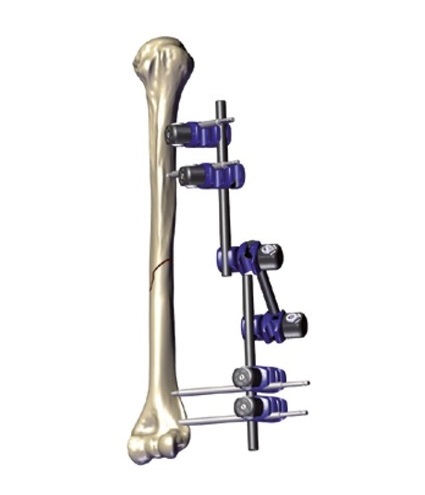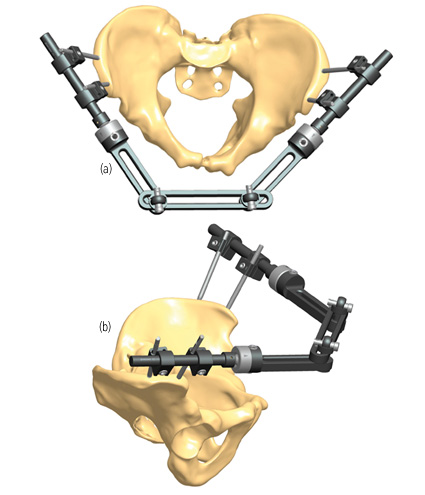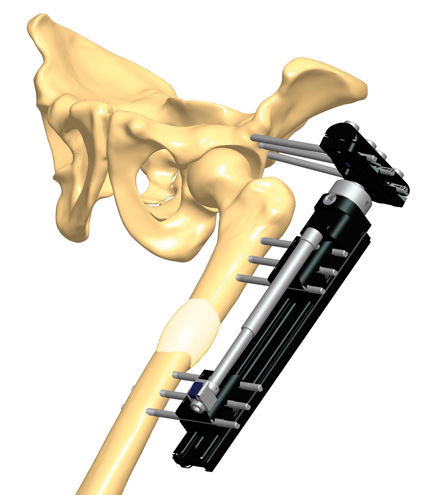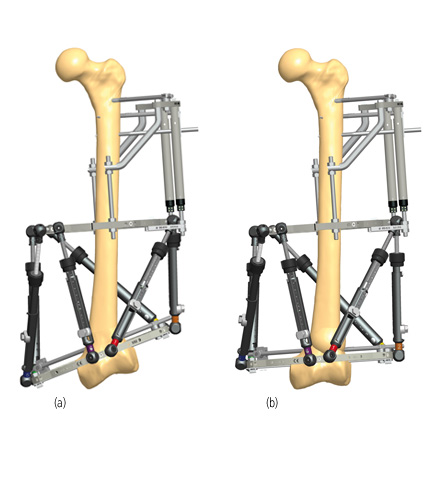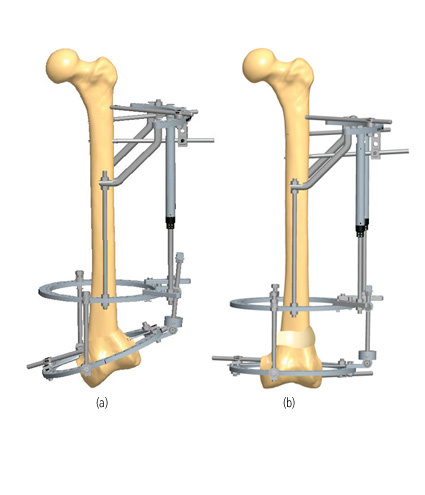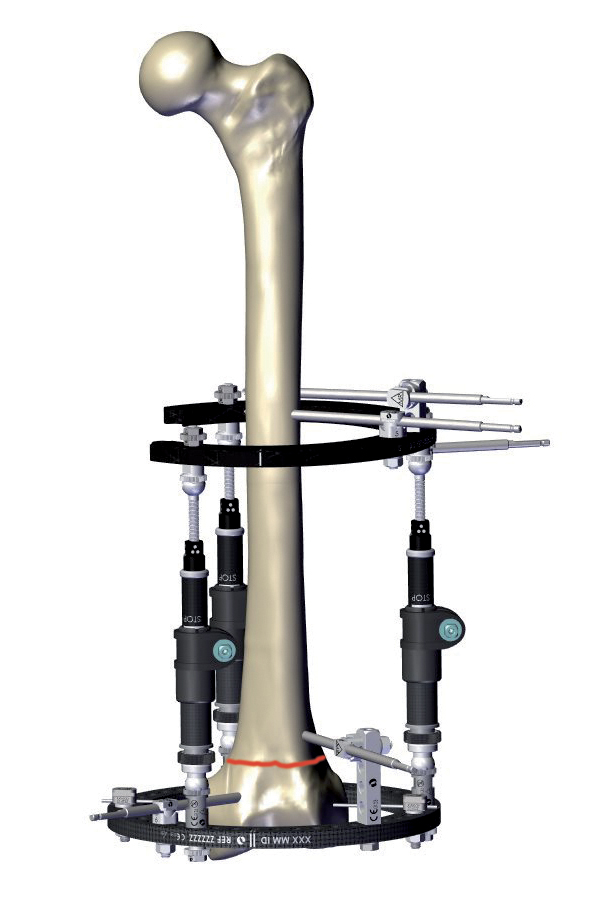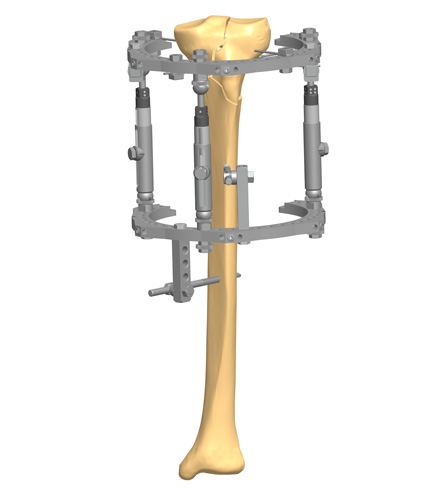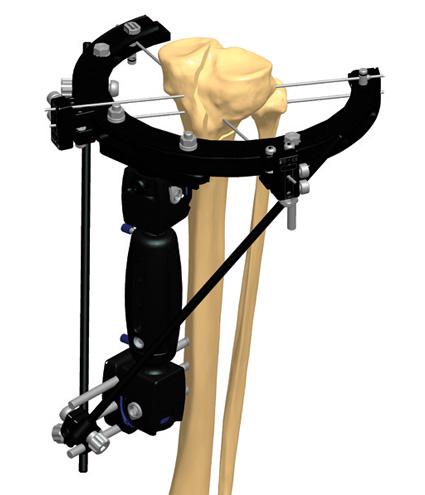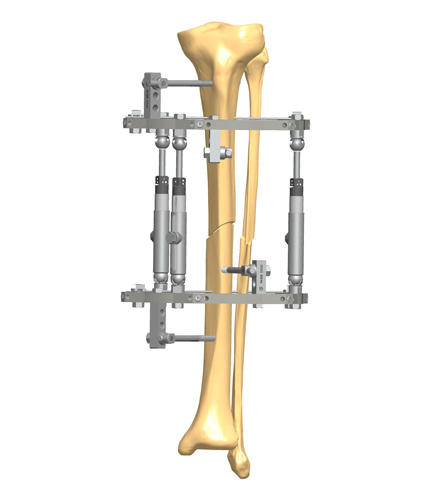Weigh bearing is considered a significant clinical issue particularly when an external fixator has been applied to a lower limb. If mechanical stability is in fact a mandatory condition for promoting fracture healing, other key components for a full recovery of the bone are early weight bearing and dynamization.
Key components for successful bone healing are early weight bearing, which provides axial loading to the fracture and stimulates osteogenesis, and dynamization, which provides an increasing load across the site of osteogenesis as the callus gains stability, and promotes a greater callus formation.(1)
Functional weight bearing combined with an appropriate amount of motion at the fracture site accelerates the healing rate with increased stiffness of the fracture callus.(2)
It is well known that in tibia fractures treated with a dynamic unilateral external fixator both clinical and mechanical healing are aided by adding axial micromotion at the fracture site . Ilizarov showed that only a combination of sufficient blood supply, bony stability, and axial loading will provide the perfect environment for osteogenesis.(3) The stability of bony fragments accomplished by the rigidity and the design of the external fixator will determine how much weight bearing is allowed.
Initially, external frames should be very stable to promote bone healing, and permit early weight bearing. As healing progresses, the bone can bear a greater load and less stability is required, and the fixator can be dynamized or minimized by removing wires and rings.
How long this initial period – the neutralization period – should last depends on many factors, such as the type of fracture, type of frame used, bone-fixator distance, patient’s total weight, extent of fracture repair, patient’s physical condition, other traumas in the same or the other limb, level of pain, patient’s psychological condition, patient’s social and family conditions. Where the Orthofix ProCallus or the XCaliber fixators are used, passive cyclic micromotion can be applied before any weight bearing has started. When dynamization is desired, the central body locking nut so far tightened may be gradually loosened. The exact timing for progressive loading and early weight bearing depends on whether the fracture is stable or unstable. In the presence of a stable fracture, progressive loading should start 2-4 weeks after surgery – initially with 30% weight bearing, then 75% up to 100%. With unstable fractures progressive loading should commence 5-8 weeks after surgery, with an initial 15% weight bearing, then 75% within two months after the operation, up to 100% over the following month, but only with radiological evidence of good callus formation. In any case, weight bearing, as tolerated by the patient, is under surgeon discretion.
References
- Fragomen AT, Rozbruch R 2007. The Mechanics of External Fixation. HSS J; 3(1):13-29.
- Klein P, Schell H et al. 2003. The initial phase of fracture healing is specifically sensitive to mechanical conditions. J Orthop Research 21:662-9.
- Ilizarov GA 1992. The Apparatus: components and biomechanical principles of application, in Green S (ed). Transosseus osteosynthesis. Theoretical and clinical aspects of the regeneration and growth of tissue. Berlin: Springer-Verlag; 63-136.


